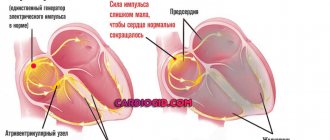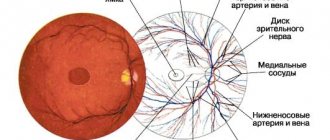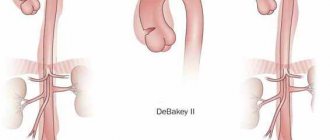Chronic lymphocytic leukemia is a malignant process and belongs to non-Hodgkin's lymphomas. This is a tumor form of leukemia, during which atypical mature lymphocytes accumulate in the human body. They are found in spleen and liver tissue, bone marrow, blood, and peripheral lymph nodes. Lymphocytic leukemia is common in all countries, but the largest percentage of patients is registered in Europe. Elderly people often suffer from lymphocytic leukemia; women are half as likely to develop this disease. The pathology itself is of low malignancy, but it is dangerous due to its complications. Against the background of constantly low immunity, other tumors may develop.
Very rarely, T-lymphocytes become the cause of the pathology (from two to five percent of cases), usually B-lymphocytes begin uncontrolled division and accumulation. A normal lymphocyte develops in stages, at the end of which it forms a plasma cell responsible for the functioning of the humoral immune system. Lymphocytes with an atypical structure, which are observed in chronic lymphocytic leukemia, do not reach this stage of development, which leads to impaired immunity. This form of leukemia progresses slowly, and the disease may be asymptomatic for several years.
What is lymphocytic leukemia?
This cancer is accompanied by the accumulation of atypical B-lymphocytes in various organs. In the early stages it manifests itself as generalized lymphadenopathy and lymphocytosis. As the disease progresses, hepatomegaly and splenomegaly occur.
Chronic lymphocytic leukemia is the most common form of hemoblastosis; it is diagnosed in a third of cases of all leukemia. Chronic lymphocytic leukemia occurs more often in men than in women. Most often this disease is diagnosed at the age of 50-70 years. At a younger age or in children, this disease is rare; the first symptoms in adult patients under 40 years of age occur in only 10% of patients.
The course of the disease is multivariate: the disease may not progress for a long time or, conversely, a more aggressive variant may develop with a fatal outcome within 2-3 years.
Most often, chronic lymphocytosis (ICD 10 code - C91) occurs in North America and Europe. In East Asian countries, the percentage of cases is much lower.
Note! Although chronic lymphocytic leukemia has a low level of malignancy, it interferes with the functioning of the immune system, and against this background “secondary” malignant neoplasms appear
Lymphocytic leukemia affects the lymphocytic row of cells, in other words, among the lymphocytes cells appear that are similar in structure, but have lost their main ability - the body’s immune defense. In the process of replacing normal cells with atypical ones, the body’s immunity decreases, which becomes defenseless against a large number of bacteria and infections.
Several organs, the lymphoid organs, are responsible for the process of lymphocyte formation.
All lymphocytes are divided into two groups: T and B. In 95-98% of cases, the disease has a characteristic B-lymphocyte nature, and in 2-5% it is T-lymphocyte in nature.
T lymphocytes are cells that have a common origin and similar structure, but they have different functions. There are cells that respond to antigens, helper cells (helpers), killer cells, cells that suppress the immune response (suppressors), and cells that remember a foreign substance that has entered the human body.
B lymphocytes are distinguished by their common origin from the bone marrow, but by a huge variety of functions. The main part of B lymphocytes are cells that produce immunoglobulins. These are specific proteins that are responsible for humoral immunity and are involved in cellular reactions.
general description
The specificity of malignant neoplasms in general comes down to a pathology accompanied by the formation of cells, whose division occurs in an uncontrolled manner with the subsequent ability to invade (that is, to invade) the tissues adjacent to them. At the same time, they also have the possibility of metastasis (or movement) to organs located at a certain distance from them. This pathology is directly related to both tissue proliferation and cell division that arose due to one or another type of genetic disorder.
As for lymphocytic leukemia specifically, it, as we have already noted, is a malignant disease, with the proliferation of lymphoid tissue occurring in the lymph nodes, bone marrow, liver, spleen, and some other types of organs. The pathology is predominantly diagnosed in the Caucasian race, with about three cases of the disease occurring annually for every hundred thousand people. The disease mainly affects older people, with males being twice as likely to suffer from lymphocytic leukemia than females. In addition, predisposition to the disease is also determined by the influence of hereditary factors.
The existing classification, which determines the course and specificity of the disease, distinguishes two forms of lymphocytic leukemia: acute (lymphoblastic) leukemia and chronic leukemia (lymphocytic leukemia).
Leading clinics in Israel
Assuta
Israel, Tel Aviv
Ikhilov
Israel, Tel Aviv
Hadassah
Israel, Jerusalem
Causes
The causes of chronic lymphocytic leukemia are not precisely known. Chronic lymphocytic leukemia is the only disease of this type where there is no confirmed connection between the occurrence of the disease and unfavorable external factors (contact with carcinogenic substances and others).
According to experts, the main factor influencing the onset of the disease is considered to be hereditary predisposition. The main cause of chronic lymphocytic leukemia (CLL) is considered genetic. As the disease progresses, changes occur in the chromosomes of lymphocytes associated with their abnormal division and growth. As the disease progresses, tumor cells first replace healthy lymphocytes and then other blood cells.
Classification of the disease
Taking into account symptoms, morphological signs, response to therapy and the rate of disease development, leukemia is divided into:
- Chronic leukemia with a benign course of the disease. It is characterized by a slow increase in the number of leukocytes. It may take several years from diagnosis to stable growth of lymph nodes. The patient's condition remains satisfactory for a long time, and his ability to work remains intact.
- The classic (progressive) form of chronic lymphocytic leukemia. Along with the progression of the disease over several months, the lymph nodes become enlarged.
- Tumor form. It is characterized by a pronounced enlargement of the lymph nodes with mild symptoms.
- Bone marrow form. There is no growth of lymph nodes, spleen and liver, but there is progressive cytopenia.
- Chronic lymphocytic leukemia with spleen growth.
- Chronic lymphocytic leukemia with paraproteimia. Symptoms of one of the listed forms of the disease are present, and there is monoclonal G- or M-gammopathy.
- Chronic lymphocytic leukemia of prelymphocytic form. Blood smears, lymph nodes, and bone marrow contain lymphocytes that have nucleoli.
- T cell form. Characterized by rapid progression with leukemic infiltration of the dermis. This type is diagnosed in 5% of cases.
- Hairy cell leukemia. Cytopenia and splenomegaly are diagnosed, the lymph nodes are not enlarged. Under a microscope, lymphocytes with cytoplasm are visible, the boundaries of which are uneven and look like hairs or villi.
There are also 3 stages of disease development:
- initial;
- manifestations of a detailed nature;
- terminal.
Stages of occurrence
To select the most optimal treatment methods, as well as to determine the prognosis of the disease, several stages of chronic lymphocytic leukemia are distinguished. At the very beginning of the development of the disease, only lymphocytosis is detected in the blood laboratory. On average, patients with this stage live more than 12 years. The degree of risk is considered minimal.
At stage 1, lymphocytosis is accompanied by enlarged lymph nodes, which can be determined palpably or instrumentally. The average life expectancy is up to 9 years, and the risk level is intermediate.
During stage 2, in addition to lymphocytosis, when examining the patient, splenomegaly and hepatomegaly can be determined. On average, patients live up to 6 years.
At stage 3, hemoglobin sharply decreases, and persistent lymphocytosis and an increase in lymph nodes are observed. The patient's life expectancy is up to 3 years.
When stage 4 occurs, thrombocytopenia is added to all these manifestations. The degree of risk in this case is very high, and the average life expectancy of patients is less than one and a half years.
Symptoms
The disease progresses very slowly, often in the initial stages it is asymptomatic and can only be detected by a blood test. The first symptoms occur in the later stages, when the number of atypical cells is much greater than normal - the level of lymphocytes can rise to 98% (normal level 19-37%). These new lymphocytes do not perform their functions, which means that immunity, despite their high content in the blood, is greatly reduced. Because of this, chronic lymphocytic leukemia is accompanied by diseases of various natures (viral, bacterial, fungal) and they are much more severe than in healthy people.
The first signs of the disease to appear are enlarged lymph nodes, often in combination with hepatomegaly and splenomegaly. The lymph nodes of the cervical and axillary regions are the first to be affected, later the nodes of the mediastinum and abdominal cavity are affected, then the groin area is affected.
Palpation reveals painless mobile elastic formations that are not connected to the skin or other tissues.
The diameter of these nodes can be from 0.5 to 5 cm, sometimes larger. Very large lymph nodes can bulge, forming a visible cosmetic defect. A strong enlargement of the spleen, liver and visceral lymph nodes can compress other internal organs, which causes various functional disorders. In addition, patients with this diagnosis may experience decreased performance and causeless fatigue.
In later stages of leukemia development, the following may be observed: weight loss, increased sweating (especially at night), and a slight increase in temperature.
Colds, cystitis, urethritis may often develop, and there is a tendency to form ulcers and suppurate wounds.
The cause of death is usually severe infectious diseases, pneumonia, which are accompanied by collapse of lung tissue and ventilation problems. Some patients may experience exudative pleurisy, complicated by rupture of the lymphatic duct, herpes zoster, which in severe cases becomes generalized (it covers the entire surface of the skin and mucous membranes).
Other symptoms - hearing loss, tinnitus - are caused by complications of the disease (infiltration of the vestibulocochlear nerve).
In the terminal stage, infiltration of the meninges, nerve roots and medulla may be detected. The disease can transform into Richter's syndrome, which is characterized by rapid growth of lymph nodes and the appearance of foci outside the boundaries of the lymphatic system. About 5% of patients survive to develop lymphoma. They usually die from bleeding, infectious complications, and anemia. Some patients with chronic lymphocytic leukemia experience severe kidney failure.
Leukemia is divided into stages of development with corresponding symptoms:
| Stages by Rai | Stages by Binet |
| 0 - lymphocytosis in peripheral blood, no symptoms, survival - over 10 years | A – hemoglobin more than 100 g/l, platelets - more than 100×10 9 /l, less than 3 affected areas*, survival rate over 10 years |
| I – lymphocytosis, with enlarged lymph nodes, survival – about 7 years | B - hemoglobin and platelets as in stage A, more than 3 affected areas, survival - about 7 years |
| II - lymphocytosis, with enlargement of the spleen (liver), enlargement of the lymph nodes, survival - about 7 years | C - hemoglobin less than 100 g/l, platelets - less than 100×10 9 / l, number of affected areas - any, survival rate is about 1.5 years |
| III – lymphocytosis, hemoglobin is reduced (less than 100 g/l), there is an enlargement of the lymph nodes, liver, spleen, survival is about 1.5 years | *affected areas: neck, head, spleen, liver, axillary and groin areas. |
| IV – lymphocytosis with thrombocytopenia, anemia, enlarged lymph nodes, liver, spleen, survival rate is about 1.5 years |
Complications
The life expectancy of a patient with CLL is limited not by the leukemia itself, but by the complications it causes.
Increased sensitivity to infections, sometimes referred to as “infectiousness.” First of all, the risk of bronchopulmonary infections increases, namely pneumonia, which kills most patients with CLL. There is also a significantly increased risk of abscesses and sepsis (blood poisoning)
Severe anemia - given that most of the patients are middle-aged people, worsens the condition of the cardiovascular system and also limits the life expectancy of patients with CLL.
Increased bleeding - poor blood clotting can cause life-threatening bleeding in patients with leukemia, usually gastrointestinal, renal, uterine, nasal, etc.
Poor tolerance to the bites of blood-sucking insects is one of the very characteristic symptoms of CLL. Large, dense formations appear at the site of bites; multiple bites can cause intoxication.
Diagnostics
Often, a disease at an early stage is discovered by chance, during an examination for other diseases, or during a routine examination. Differential diagnosis is carried out with other lymphoproliferative diseases.
Diagnosis of leukemia is carried out using the following methods:
- personal examination of the patient, medical history;
- blood test (to detect indicators of increased levels of leukocytes and lymphocytes). An increase in the number of lymphocytes more than 5 × 109/l indicates the risk of the presence of chronic lymphocytic leukemia. Sometimes there are lymphoblasts and prolymphocytes. A systematic blood test reveals a slowly growing lymphocytosis, which displaces leukocyte cells, and in later stages, other blood cells;
- biochemical blood test (detection of abnormalities in the functioning of the immune system);
- immunophenotyping (IPT) of lymphocytes (to confirm the presence of cells with an aberrant immunophenotype and clonality);
- myelogram (detects the replacement of red bone marrow cells with lymphoproliferative tissue);
- sternal puncture of the brain and examination of the resulting puncture or aspirate (to determine the causes of cytopenia);
- cytogenetic study;
- Ultrasound and CT.
Do you want to know the cost of cancer treatment abroad?
* Having received data about the patient’s disease, the clinic representative will be able to calculate the exact price for treatment.
Treatment
The “golden rule” of oncology states that cancer treatment should begin no later than 2 weeks after diagnosis. However, this does not apply to CLL.
Leukemia is a tumor dissolved in the blood. It cannot be cut or burned with a laser. Leukemia cells can only be destroyed by poisoning with powerful poisons called cytostatics, and this is not at all harmless to the entire body.
In the initial stages of the development of chronic lymphocytic leukemia, doctors have one tactic - observation. In fact, we refuse to treat this type of leukemia so that the medicine does not turn out to be worse than the disease itself. CLL is incurable, so sometimes a patient can live longer without treatment.
Indications for starting treatment for chronic lymphocytic leukemia are as follows:
- a twofold increase in the number of leukocytes in the blood in 2 months;
- a twofold increase in the size of lymph nodes in 2 months;
- the presence of anemia and thrombocytopenia;
- progression of symptoms of cancer intoxication - weight loss, sweating, low-grade fever, etc.
Treatment methods for chronic lymphocytic leukemia are as follows:
- Bone marrow transplantation is the only method that allows achieving reliable, sometimes lifelong, remission. Used only in young patients.
- Chemotherapy is the use of antitumor drugs according to special regimens. This is the most common and studied treatment, but has many side effects and risks.
- The use of special antibodies - biologically active drugs that selectively destroy tumor cells. A new and very promising technique has fewer side effects than chemotherapy, but is many times more expensive.
- Radiation therapy is the effect of radiation on enlarged lymph nodes. Used in addition to chemotherapy if lymph nodes are causing compression of vital organs, large vessels or nerves.
- Surgical removal of lymph nodes is carried out for the same reasons as their irradiation. The choice of method is carried out individually, taking into account the characteristics of each patient.
- Therapeutic cytapheresis is the removal of leukocytes from the blood using special equipment, aimed at reducing the mass of tumor cells. Used as preparation for chemotherapy or bone marrow transplantation.
In addition to the effect on tumor cells, there is symptomatic therapy, aimed not at treating the disease, but at eliminating life-threatening symptoms:
- Blood transfusion - used when there is a critical decrease in the amount of red blood cells and hemoglobin in the blood.
- Platelet transfusion - used when there is a significant decrease in the number of platelets in the blood and the resulting increased bleeding.
- Detoxification therapy is aimed at removing tumor toxins from the body.
How to treat leukemia
In the early stages of the disease, expectant management is used - examinations are scheduled after 3-6 months. If the disease does not progress, then observation is limited.
The indication for starting active treatment is an increase in the level of leukocytes by half or more in 6 months.
Chemotherapy is considered the main method of treatment. The following combinations of drugs are used:
- “FCR” - “Cyclophosphamide”, “Fludarabine”, “Rituximab” - the most common and effective treatment regimen;
- The combination of Chlorambucil and Rituximab is used for somatic abnormalities;
- “COP” - “Vincristine”, “Cyclophosphamide”, “Prednisolone” - is prescribed when the disease progresses during therapy with other drugs. The therapy regimen is repeated every 3 weeks, a total of about 6-8 repetitions are needed;
- "CHOP" - "Vincristine", "Cyclophosphamide", "Prednisolone", "Adriablastin" - is used in the absence of results from the use of the "SOP" treatment regimen.
When using the COP or CHOP treatment regimens, complete remissions occur in 30-50% of patients, but they are short-lived.
The FCR program leads to remission in 95% of cases; the duration of remission in this case can be up to two years. Large doses of corticosteroids may also be prescribed, and a bone marrow transplant may be performed if the disease progresses rapidly. In elderly patients with severe somatic pathology, the use of such treatment methods is not advisable. In such cases, monochemotherapy with Chlorambucil is used or this drug is used in combination with Rituximab.
When diagnosing chronic lymphocytic leukemia with cytopenia, Prednisolone is used, treatment of which is carried out until the patient’s condition improves (course duration is 8-12 months). Improvement in the patient's condition is an indication for stopping treatment; if symptoms return, treatment is carried out again.
Radiation therapy makes sense when there is an enlargement of the lymph nodes, spleen, lymphocytic infiltration of nerve trunks, and a large number of lymphocytes in the blood in combination with anemia and thrombocytopenia. Radiation therapy is also used for local irradiation of the diseased organ in the last stages of the disease or in the absence of effect from drug treatment.
If there is severe cytopenia in the blood test, the lack of effectiveness of treatment with glucocorticoids, or the enlargement of the spleen to an impressive size, removal of the spleen may be prescribed.
Be sure to follow a diet during treatment. Nutrition for lymphocytic leukemia should be high in vegetable protein; preference should be given to foods containing many vitamins and nutrients. The ideal food for every day is fresh fruits and vegetables in sufficient quantities. Avoid fried, fatty, preservatives, and spicy foods.
It’s good to walk more in the fresh air - walking is useful, heavy physical activity is excluded.
Prognosis of lymphocytic leukemia
The prognosis for recovery is not particularly optimistic - chronic lymphocytic leukemia cannot be completely cured, but with timely and correct treatment, the duration and quality of life can be significantly improved. But even with quality treatment, the disease progresses slowly.
In 15% of cases, an aggressive course of the disease occurs - death occurs within 2-3 years. In other cases, there is a slow progression, the average life expectancy is 5 - 10 years. With a benign course, life expectancy is several decades. After treatment, improvement in health is observed in 40-70% of patients with chronic lymphocytic leukemia, but complete remissions are rare.
No cases of absolute recovery from chronic lymphocytic leukemia have been identified. Life expectancy depends on many factors: general health, age, gender, timeliness of diagnosis and effectiveness of treatment.
Prognosis and prevention
The prognosis of chronic lymphocytic leukemia and the life expectancy of a person depends on the stage of the disease and the nature of its course. Complete remission after therapy occurs only in thirty percent of cases, but it usually does not last long. Complete remission means the absence of any symptoms, normal blood counts and the size of the spleen and lymph nodes for two months.
Partial remission means that during the same period some manifestations disappear, while others remain. Basically, doctors manage to transform a progressive disease into a stable form, in which the patient’s condition neither improves nor worsens. There are no specific preventive measures that can prevent the development of chronic lymphocytic leukemia. A person needs to lead a healthy lifestyle, this helps strengthen the immune system.










